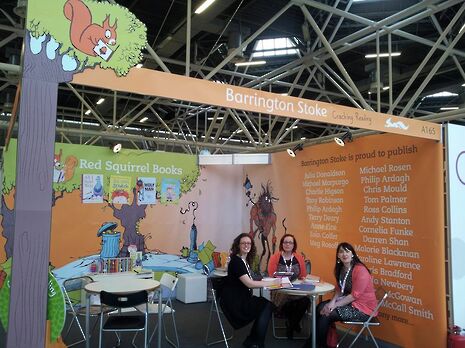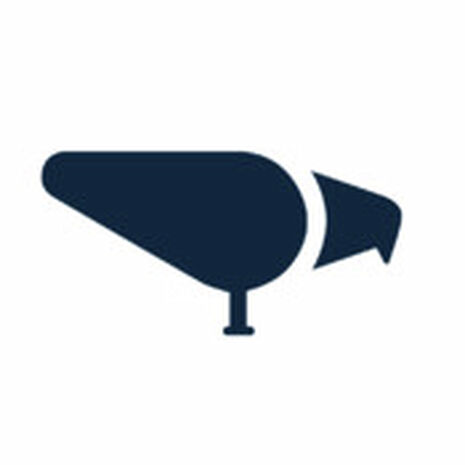Where is publishing going?
Talia Zybutz interviews Jacob Cockcfroft and Mairi Kidd on how they are innovating the publishing industry

It's a diverse world out there. From E-books to iBooks, self publishing platforms like Wattpad, to the ever-present growth of digital reading, if Harry Potter came out now who knows how we would be reading it? We talked to two companies who are innovating and inventing in publishing, one through paper books and the other digital, to see what they had to say about the future of their field.
Mairi Kidd works for Barrington Stoke, a company dedicated to ‘cracking reading’ by providing specially designed physical books for dyslexic readers.
What is different about a Barrington Stoke book?
The most obvious difference is the word count - our shortest books have just 500 words and our longest 20,000. A typical teen novel will clock in at at least 40,000. The other obvious differences are our paper stock, which is tinted with a pale yellow to reduce contrast, and our font and typesetting, which are designed to counteract poor visual discrimination and other issues.
We also carry out a specialist edit, tweaking syntax and vocabulary to reduce barriers to comprehension. That’s it in terms of difference - we ask our authors not to modify their writing in any other way. Our readers need the best stories to persuade them that reading is worth the effort - we won’t publish anything that’s ‘dumbed down’ in its content.
Would you like to see a growth in books produced specifically for dyslexic readers?
No - we would like to see an increase in accessibility across the board. Paper means pennies in print publishing and so there’s a tendency to typeset too tightly and print on cheap stock that is see-through to a degree that can be quite uncomfortable for an able reader, never mind an individual with dyslexia. There’s also a fashion for children’s and YA books to be very long with no good editorial justification - I blame Mses Rowling and Meyer - and design definitely trumps readability in a lot of young fiction.
Do you have any personal anecdotes about the kind of support you’ve received?
Our postbag is a bit of a tear-jerker; there’s one letter I often read aloud at events and it chokes me up every time. It’s from a lady whose teenage son absolutely adores books but could read so little due to his dyslexia that his school had ‘condemned’ him to books for younger children. He had become quite depressed as a result. They discovered Barrington Stoke and he read his first age-appropriate title, right there and then, three chapters at one go. His mother said she cried with pride, and he cried with relief. This story is far from unique in the bones of it; we hear variations of it over and over, but it never becomes less touching. It’s a real privilege to be able to help.
Do you see a future in e-books?
That’s hard question because e-reading is really still in its infancy, the adoption of digital formats for children’s books is very small and it doesn’t seem to be growing at the moment. It seems likely that stand-alone e-readers like the original Kindles will fall by the wayside and future devices will be multi-functional, as iPads and other tablets already are. This should give more options re layout but it also raises a lot of questions - is back-lighting a good thing, for example? Do children give their full attention to a book read on a tablet or is a portion of their processing power given over to thinking about the multitude of other - perhaps funner - functions the device also performs?
What other changes do you foresee for the publishing world?
The sea-change in publishing in recent years has been driven by large commercial interests outside publishing - online retailers, content companies and the producers of e-readers. Many of these companies are most interested in building their share of the general retail market; books were a handy way in but now the book industry is paying the price. But I do believe the book - by which I mean the printed book - will survive in the children’s sector at least. I love It’s a Book by Lane Smith - it makes the very good point that books weren’t broke before the world started trying to fix them.
What advice would you have for anyone interested in getting involved with Barrington Stoke or a similar publishing project?
Avoid the sentence ‘I really love books’. We all love books, but we’d love it even more if someone were to say, ‘I love posting review copies/checking stock/improving SEO on blog posts/typesetting/uploading author videos/laying out marketing copy/taping up the recycling to go out’. Publishing a book is not the same as reading one. It’s a hard slog, but the reward at the end of the day is that someone who loves books will - hopefully - love yours.

Jacob Cockcroft is the co-founder of The Pigeon Hole, a new indie publisher that releases book chapters to its app in weekly ‘staves’, combining this with interactive extra content such as soundtracks and author Q&As.
What prompted you to start up The Pigeon Hole?
The general malaise that has taken over the publishing industry and the desire to do something about it. Launching books should be exciting. This is the aim of publishing our books in staves (instalments) – to create suspense and ceremony each week. In turn our books get as much exposure as possible; rather than a perfunctory week on the shelves they get months of publicity. The Pigeonhole is creating not only a new reading experience, but also a fun social experience.
With changes like this, where do you see publishing going in the next few years?
There is huge change afoot, but the future will always involve a combination of digital and physical. You can’t reinvent the wheel, but you can maximize the potential technology provides.
The industry is, however, fast dividing into the large corporate houses and the small, independent and boutique companies. Both have their benefits, but they give a very different experience. The key focus will mostly be on digital publishing – the cost base of physical publishing and distribution makes this certain.
Would you ever consider re-publishing some of the classics in this format, perhaps for schools?
We will definitely be doing this – we are currently arguing over The Count of Monte Cristo or the Bible for our first book of this type. Just think of the extra material we could do!
In terms of schools, there is huge potential for utilizing The Pigeonhole – and we have already started looking into this type of application.
What’s it like working in a small publishing start-up?
Non-stop, but so exhilarating and dynamic. We are building something really special and at no point does it ever feel much like work. It’s far too exciting for that.
What advice would you give to anyone who wanted to get involved in publishing or even start their own publishing company?
The main focus should always be people and product. Create an extraordinary team and know what you want, but flexible on how you get there. The point of The Pigeonhole has always been incredibly strong in our minds, we knew exactly what it was we wanted to create, but the functionality has changed so much as we’ve been guided by the experts who’ve helped us along the way. Never be precious and always listen to what people have to say, because the things you’ll learn if you keep an open-mind will take your company from good to brilliant.
 Comment / Anti-trans societies won’t make women safer14 November 2025
Comment / Anti-trans societies won’t make women safer14 November 2025 News / Controversial women’s society receives over £13,000 in donations14 November 2025
News / Controversial women’s society receives over £13,000 in donations14 November 2025 News / John’s rakes in £110k in movie moolah14 November 2025
News / John’s rakes in £110k in movie moolah14 November 2025 Fashion / You smell really boring 13 November 2025
Fashion / You smell really boring 13 November 2025 Music / Three underated evensongs you need to visit14 November 2025
Music / Three underated evensongs you need to visit14 November 2025









